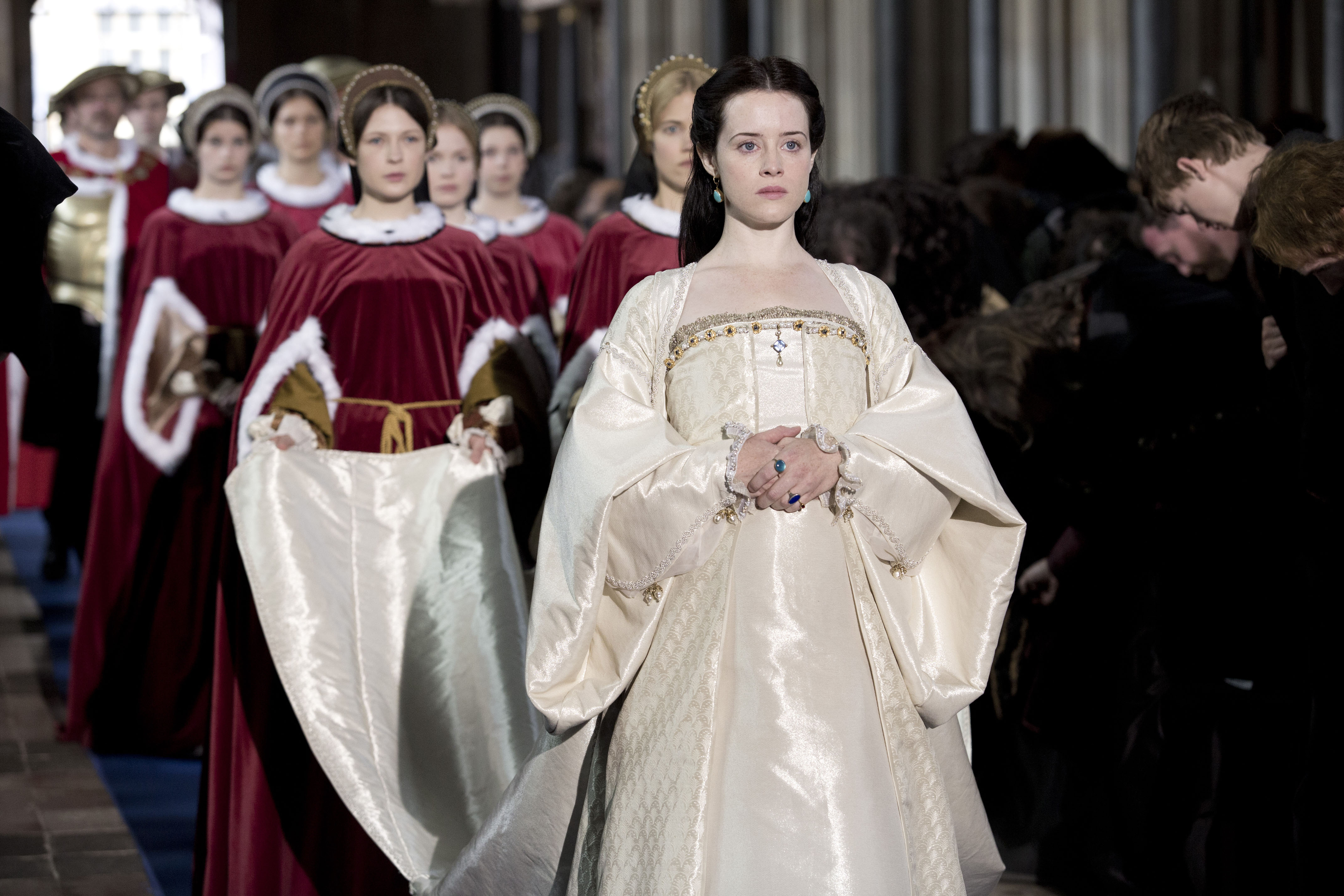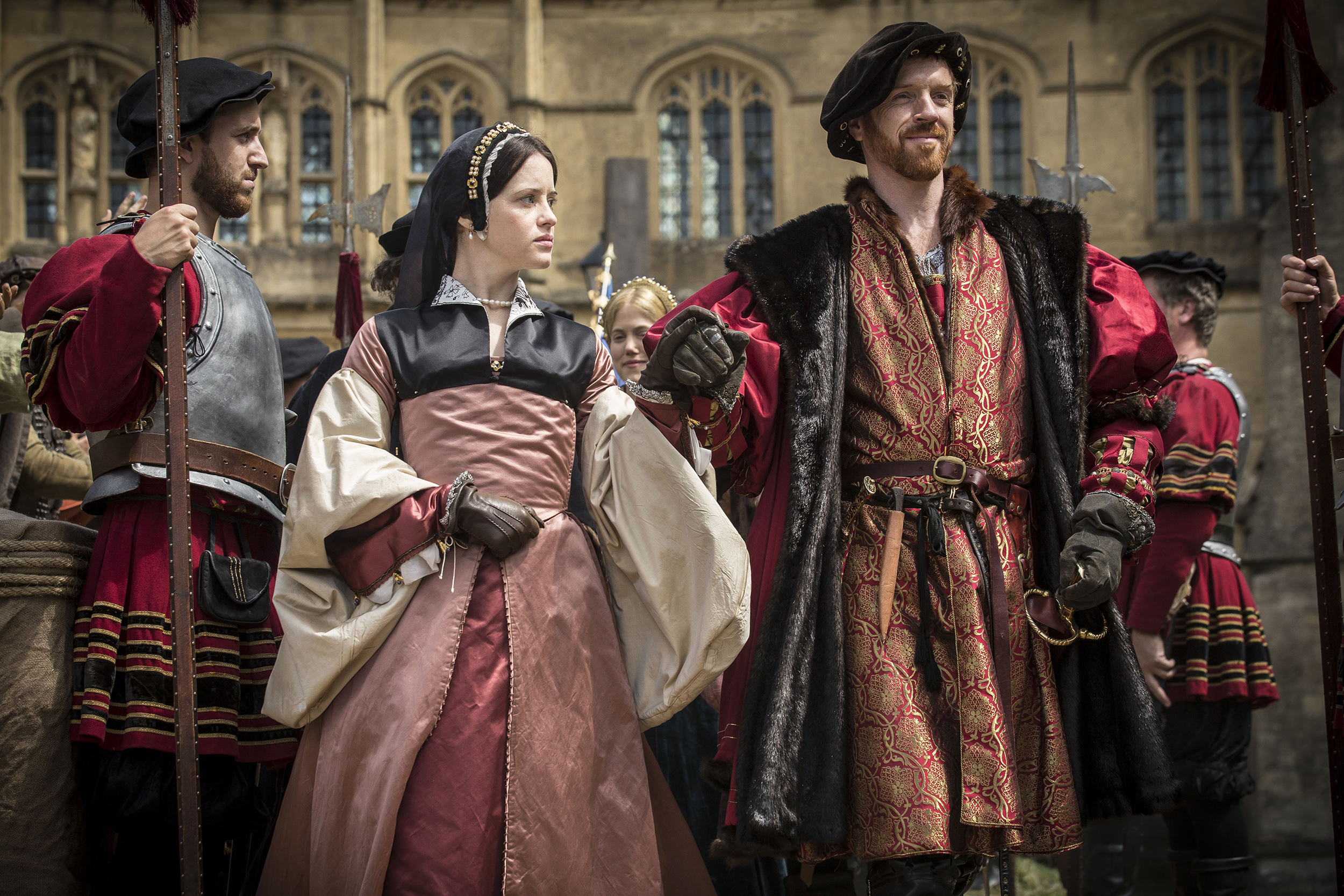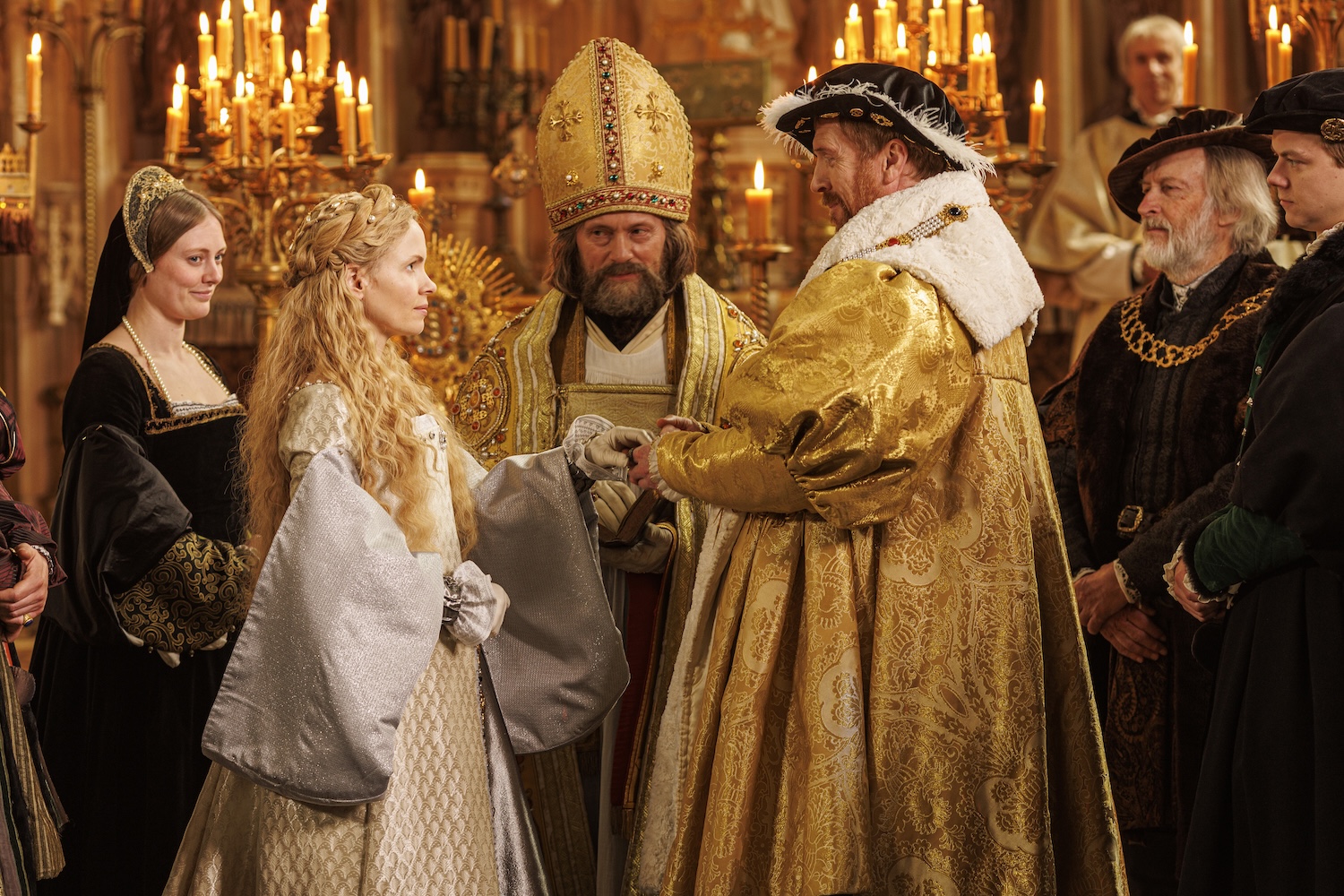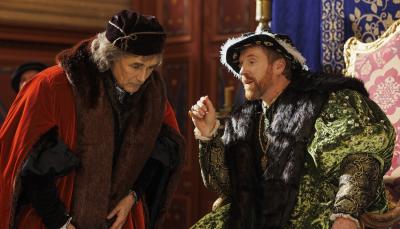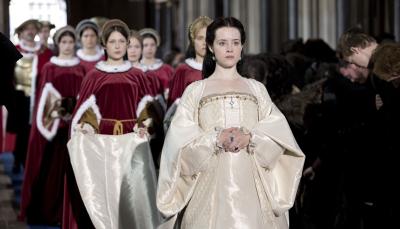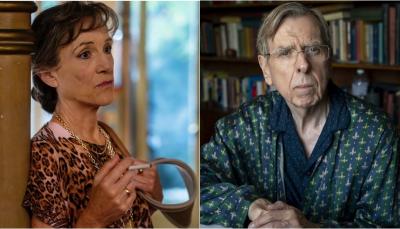'Wolf Hall: The Mirror & the Light': Marriage, Birth & a New Dynasty
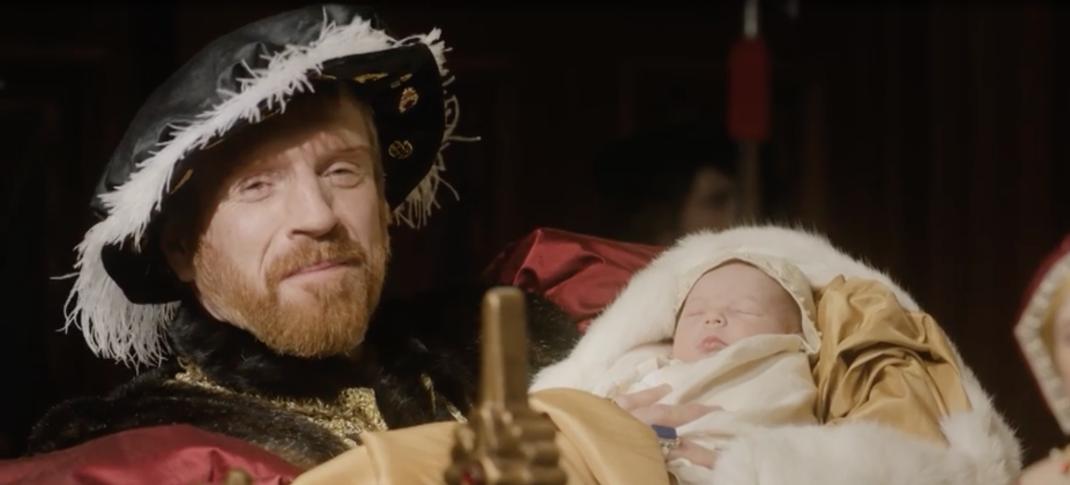
Henry VIII presents his newborn son to the court.
© Masterpiece
Wolf Hall is dominated by themes of marriage, pregnancy, and childbirth, a primary concern for the first two generations of Tudors, which only loomed larger as Henry started going through wives like tissue paper, as he does in The Mirror & the Light. The Church controlled marriages for centuries in England, but it seemed somewhat chaotic. Initially, a private contract between individuals was drawn up, and if property was involved, a legal written contract was required. However, a verbal agreement between individuals was considered binding enough to validate a marriage, particularly if made before a priest. It was expected that the banns would be called (three times!)*, followed by the official ceremony, and completed with the blessing of the marriage bed and consummation.
(*The purpose of the banns was to find out if the bride or groom had been verbally contracted with someone else, which seems to have been quite common.)
Giving birth was a dangerous business (as it still is), and chances of survival for mothers and infants were tragically low. For the new Tudor Dynasty, the birth of sons was critical. Henry VII, the first Tudor King, made a strategic marriage to Elizabeth of York, whose claim to the English throne as the daughter of a King was far more substantial than his. Three of their four children survived to adulthood. Their first son, Arthur, died young, leaving his bride, Catherine of Aragon, widowed in her teens, later marrying the second son and now heir, Henry.
Years later, obsessed by Anne Boleyn and the impossibility of siring a male heir, Henry questioned the validity of his marriage since he had married the widow of his own brother. However, the Pope refused his request for an annulment since his predecessor had allowed Catherine and Henry to marry despite their in-law relationship.
Previous promises were mentioned in Wolf Hall Season 1, specifically regarding Ann Boleyn and Henry Percy. Cromwell was sent to tell Harry to back off; now, the King would pursue Anne. Similarly, Henry got rid of Henry’s fifth wife, Katherine Howard, by allowing her to “marry” Francis Dereham via a verbal agreement followed by sex and lots of willing witnesses. (Thus invalidating her marriage to Henry VIII, as he intended.)
Henry could clap anyone who married the wrong partner into the Tower. Other reasons for breaking up a marriage could be dredged up as necessary – insanity or impotence, the latter of which had to be proved before a Church Court, allegedly employing the talents of a panel of mature women. Royalty might betroth their children to a royal partner at a very young age, knowing that the agreement could be easily altered if a more suitable candidate became available. Although the age of consent in England was 14 for boys and 12 for girls, it didn’t necessarily mean early marriages, particularly among those at the lower end of the social scale (small property/business owners and wage earners).
England was unique in its late marriage patterns, with couples waiting until their mid-to-late twenties to marry, likely because this was the age at which they inherited the family business or home. The wait shortened a woman’s fertility, with menopause generally taking place a good decade earlier in those times, at around forty.
Henry and his court watched his Queens closely for signs of pregnancy. The Queen was expected to appear in public and carry out her regular duties as usual until the last few weeks of her pregnancy, relying on companions and relatives for advice and assistance. Generally, a pregnancy was confirmed when the woman “quickened” – i.e., experienced the movement of the fetus at about five months. Anne Boleyn’s coronation took place while she was visibly pregnant; a month before the birth, according to tradition, she retired to her private room after taking mass. The “taking of the chamber” indicated the transition from public and male business to female and private.
Anne received luxurious gifts from Francis I of France – lengths of velvet, silk sheets, and a litter to carry a pregnant woman, along with three mules to pull it, and the room was lavishly decorated, the walls and ceilings hung with blue arras. Anne’s ladies-in-waiting served as birth attendants and companions. Another treasured tradition, the use of Talismans and relics to protect a woman during childbirth, was tolerated by the Catholic Church but outlawed by the Church of England since the activity smacked of both witchcraft and Catholicism. For each of her deliveries, Elizabeth of York, Henry VIII’s mother, sent for the "Girdle of Our Lady" from Westminster Abbey.
A birthing girdle was a collection of parchments bearing religious texts and icons, designed for a woman to wrap around herself while in labor. Analysis of a birthing girdle revealed human cervicovaginal fluid, along with traces of proteins from honey, cereals, legumes (such as beans), and milk from sheep or goats - all foodstuffs designed to nurture the new mother. A popular dish for regaining strength after childbirth was caudle, which typically included grain, milk, eggs, honey, and sometimes alcohol, a dish that remained in the English cookery repertoire until the Victorian era.
Midwives allowed the mother to deliver standing, kneeling, or supported by her women, in bed or out of it, or using a birthing chair. We know that Anne chose to deliver in bed, and the room was furnished with two beds, one for the Queen to formally present herself to visitors, since birth is a messy business, and a less luxurious bed for delivery.
It wasn’t until labor began that the midwife arrived. Midwifery was a well-respected profession, licensed by the local diocese. Midwives were allowed to baptize a newborn infant if a priest was not available and were also called upon to give evidence in court cases relating to premature birth, miscarriage, or infanticide. A surgeon would be called only in dire need, and his arrival with his tools of the trade suggested that neither mother nor child could survive. The Church, concerned about “uppity women” and witchcraft, an attitude which persisted before and after the break with Rome, wanted to keep a close watch on midwives. It was the first step in the business of childbirth becoming controlled by male practitioners.
Henry and Anne were so sure they would have a boy that birth announcements were written out for a Prince, with gaps for the name. The prevailing medical theory was that the gender of the baby was determined just before birth and that the mental outlook of the mother was important. Anne didn’t wish hard enough for a boy, and there wasn’t room to convert Prince to Princess. Anne moved to the official bed to receive a stream of visitors and well-wishers, while Henry canceled the jousting tournament he’d planned for the new Prince. As was the custom, neither he nor the Queen attended the christening, the Duke of Norfolk standing in for the King.
But it was clear Henry regarded the baby as his heir, as within weeks Anne was packed off to Hatfield House, where both a cradle for everyday use and a “cradle of estate” for receiving visitors were provided, plus her own staff and a wet nurse. It was doubtful Anne would have been allowed to nurse her own baby, one reason being that it would reduce her chances of conception. Wet nurses frequently formed strong attachments to the babies they reared and might stay with a family for years. Henry VIII, aged 17, even invited his wet nurse to his coronation.
Finally, if you’ve wondered why Henry VIII and his wives had such heart-breakingly bad luck siring an heir, scientists have proposed that it may have been caused by a rare blood type (Kell positive), which would have made full-term healthy births almost impossible and explains both the many pregnancy losses his wives experienced and his own failing health at a relatively young age.
Wolf Hall: The Mirror & the Light airs on most local PBS stations and streams on the PBS app weekly on Sundays at 9 p.m. ET. All episodes are available for PBS Passport members and the PBS Masterpiece Prime Video Channel to binge before their on-air broadcast.

